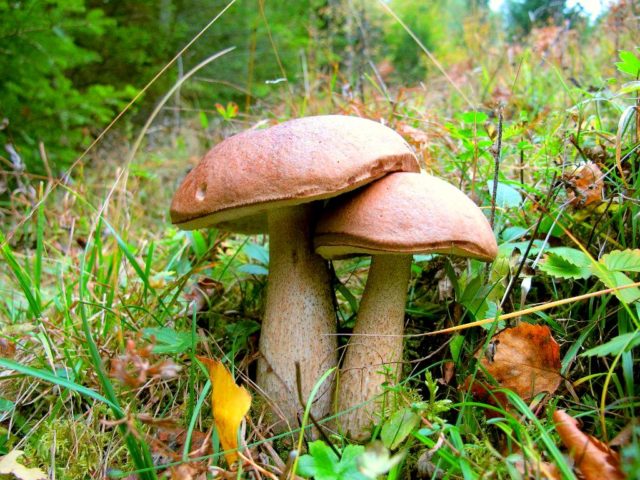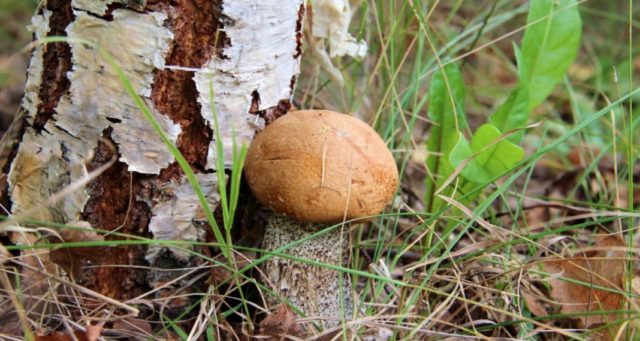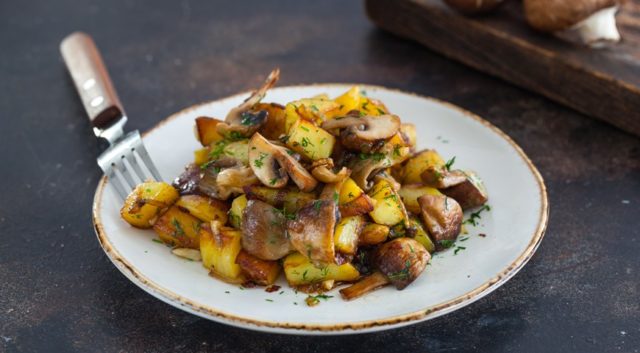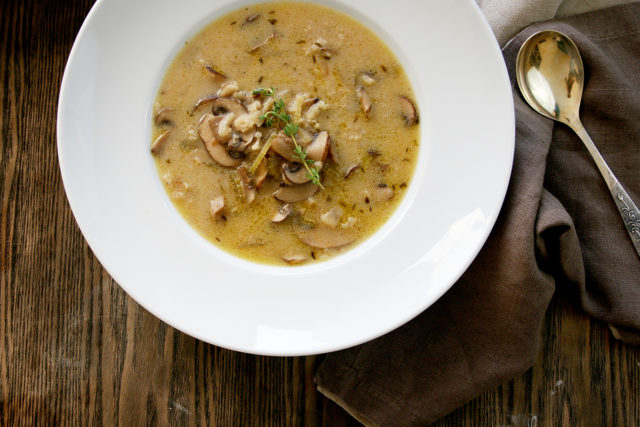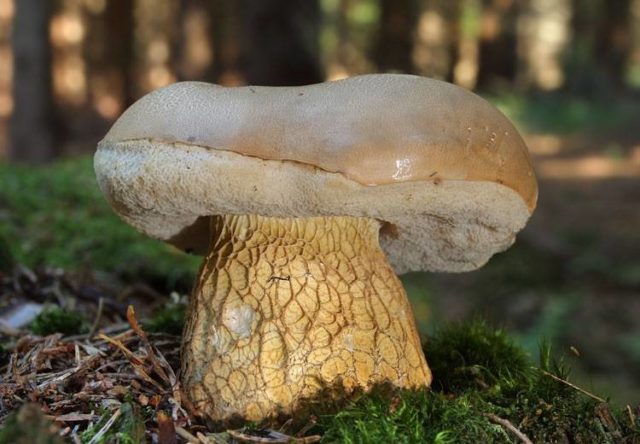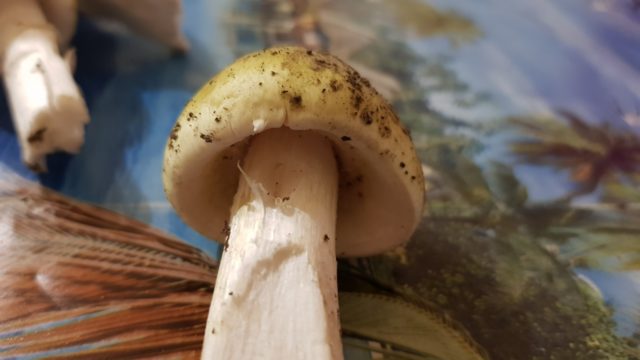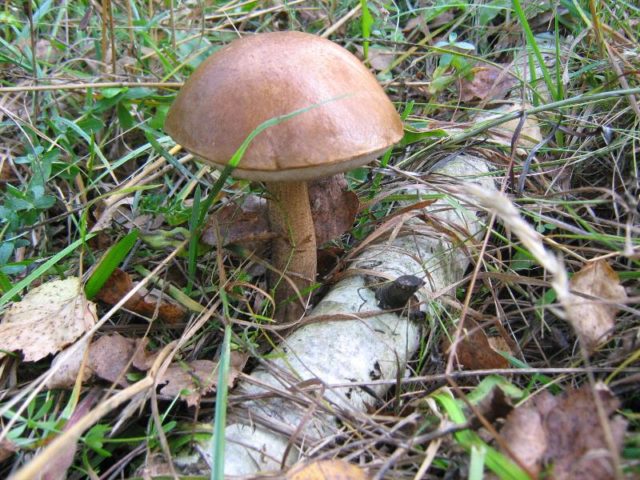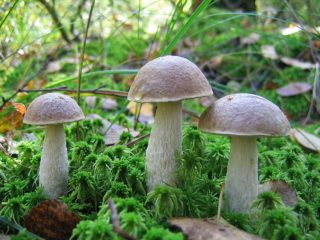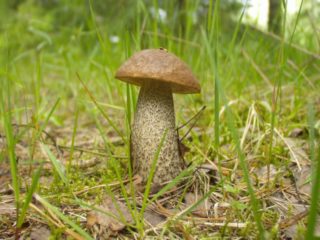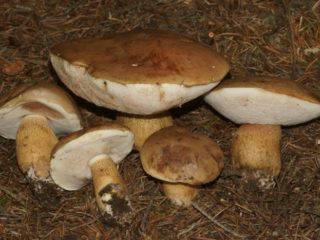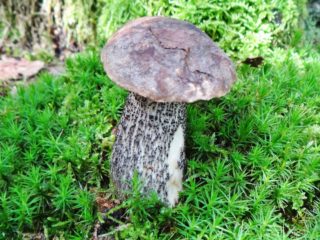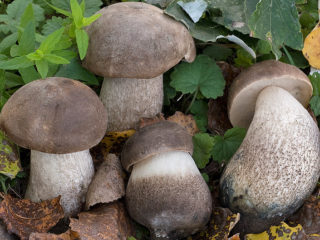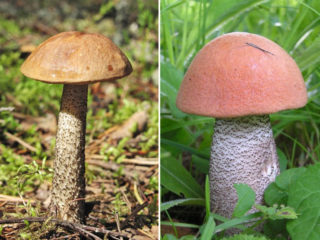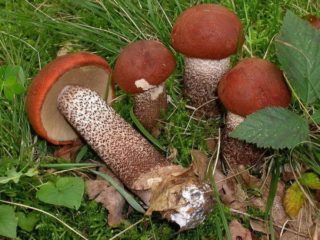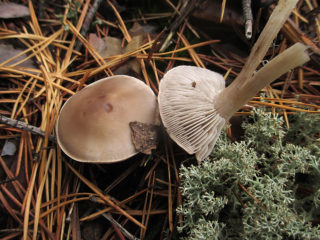Content
Mushroom picking in the forest is often associated with the difficulty of determining the species. In order to find whole, intact specimens, you need to know not only the external description of the edible species, but also the main habitats. Common boletus belongs to the type of spongy cap mushrooms. It is also called a birch tree or a birch tree.
Where does the boletus mushroom grow
Obabok, or common boletus, begins to appear on the edges of mixed forests with the arrival of summer and grows there until late autumn. It got its name due to the fact that it forms mycorrhiza with birches. This means a close symbiotic relationship with the roots of the tree. Most often, this species is harvested in mixed forests, where birches occupy a leading position or at least are found (for example, in spruce plantations). Common boletus boletus are common on the territory of mainland Europe, they also grow in North America.
What does an ordinary boletus look like
According to the external description, common boletus is easy to distinguish from other varieties. Its parameters are often used to demonstrate a typical class representative:
- Hat. The shade of the cap can be light gray (in young specimens) or dark brown (in old fruiting bodies). Rounded or hemispherical, it reaches 15 cm in diameter. After rain or dew falls, the cap may be covered with a small amount of mucus. Under the dark thin skin of the surface, white pulp is hidden, which darkens slightly when broken and has a characteristic mushroom smell.
- Leg. Can be up to 15 cm in length and 3 cm in girth. Solid, semi-cylindrical, the leg slightly expands to the surface of the earth. In adult specimens, its pulp after cutting becomes tough, fibrous, watery.
Is it possible to eat common boletus
Common boletus belongs to the edible group. They use hats and parts of the legs for food. In addition, they are classified as the classically edible species that, when cut, exude a recognizable mushroom smell.
Mushroom taste
Common boletus mushrooms are in second place after porcini mushrooms in terms of taste. The preparation of this type does not require prolonged heat treatment, the characteristic mushroom smell does not disappear after cooking. The pulp becomes soft, acquires a rich creamy taste. A distinctive feature of ordinary boletus is the darkening of the white pulp after boiling.
Common boletus mushrooms are used for: various types of culinary processing:
- frying;
- boiling;
- pickling;
- drying.
The rich taste and aroma make it possible to prepare soups, sauces, gravies from the product, make sour cream dressings, mixing with butter, olive or other vegetable oils.This variety is combined with root vegetables, cereals, well suited for fillings in pies, kulebyaki.
Benefits and harm to the body
Boletus boletus during heat treatment emits a harmful substance - quinine, which can have a negative effect on digestion, therefore, after boiling, the water is drained and not used for further cooking.
Common boletus is useful for those who follow a diet. According to its taste and nutritional value, it can replace some types of meat, while it does not have a high calorie content. Diet planning takes into account compatibility with other foods.
Common boletus contains an increased amount of ascorbic acid, as well as calcium and magnesium. Proteins that make up more than 30% are considered complete, that is, they have essential amino acids such as lecithin, arginine and glutamine. This content of the product does not require the presence of special enzymes for digestion. Protein is quickly and easily absorbed by the intestines, which explains the dietary properties of the gibberish variety. They are known to be used in folk medicine to treat chronic kidney disease.
You can get to know the common boletus better by watching the video:
False doubles
Common boletus boletus have a dangerous twin, which is called a bile mushroom.
The differences between these varieties are described in the table:
Signs of differences | Common boletus | Gall mushroom |
Habitat | Mixed or spruce forests with a predominance of birch trees. | In forests near wetlands, in ravines. |
External description | The shade of the spore powder is light, cream. | Spore powder mixed with dirty yellow spots. |
Cap structure | Elastic, dense, does not change shape when pressed. | It is pressed with light pressure and does not return to its original shape. |
Smell | Mushroom smell. | Not. |
Features of the | They grow in bright, open places. | There are no insects on the surface of the fruiting body, because they are not attracted by bitter inedible mushrooms. |
Mushroom pickers argue that, due to inexperience, obabok can be confused with one of the poisonous mushrooms, pale toadstool. Toadstools grow under birches and aspens. The time of their appearance coincides with the beginning of fruiting in the boletus forests:
The fruiting periods of the two species are the same: from July to October.
The rounded toadstool's hat is in the shape of a hemisphere. Its diameter is up to 10 cm. In young representatives, the shade of the cap is attractive: glossy, light brown. When cut, the pulp does not darken, remains whitish, exudes a weak sweetish aroma. The leg, like that of a boletus, is lighter than the cap, widens downward. White toadstool belongs to the class of poisonous mushrooms. Poisoning can cause serious complications.
To distinguish between toadstool and grebe, it is recommended to focus on several main characteristics of a false species:
- lack of symbiosis with birch roots;
- no characteristic mushroom aroma;
- there are no insects on the surface of the fruiting body.
Collection rules
When collecting, it is necessary to take into account the recommendations of experienced mushroom pickers:
- Plan your route in advance. Do not pick mushrooms near roads, industrial enterprises, because they absorb harmful substances that accumulate under the base of the cap.
- Cut off the fruit body at the surface of the ground with a knife at an acute angle.
- Place the mushrooms in a non-plastic container. The best option is a wicker basket: it allows air to pass through, does not allow the caps of neighboring copies to squeeze each other.
- Do not pick up damaged wormy mushrooms.
- Bypass copies of which there are doubts about their ownership.
- Sort out fruiting bodies after collection, discard unsuitable ones.
Mushroom pickers recommend cooking boletus boletus during the first days after collection. Raw materials are not subject to long-term storage or transportation.
Use
Common boletus mushrooms after harvest are often cooked with potatoes and onions. Before frying, they are cleaned, the lower part of the leg is cut off, soaked in cold water, then boiled for 25 - 30 minutes.
To prevent the pulp from darkening, use cold water acidified with citric acid when soaking. For 2 liters, take 0.5 tsp. powder or squeeze juice from half a lemon.
Boletus mushrooms are dried using electric dryers or ovens. They are also frozen after boiling. The dried parts are stored in cloth bags or food paper bags. Frozen mushrooms are stored on a freezer shelf in plastic bags with sealed valves for 3 to 6 months. Most often boletus mushrooms are pickled, they are not so attractive in pickles, they lose their characteristic taste.
For frying, together with ordinary boletus mushrooms, varieties similar in type are often taken: porcini mushrooms, aspen mushrooms.
Conclusion
Common boletus is a delicious edible mushroom with a characteristic recognizable smell. When collecting this variety, take into account that its representatives grow in birch forests. This helps not to confuse them with false counterparts. Before cooking, ordinary boletus is subjected to short-term soaking, while citric acid is added to avoid darkening of the product, as in the case of boiling.
